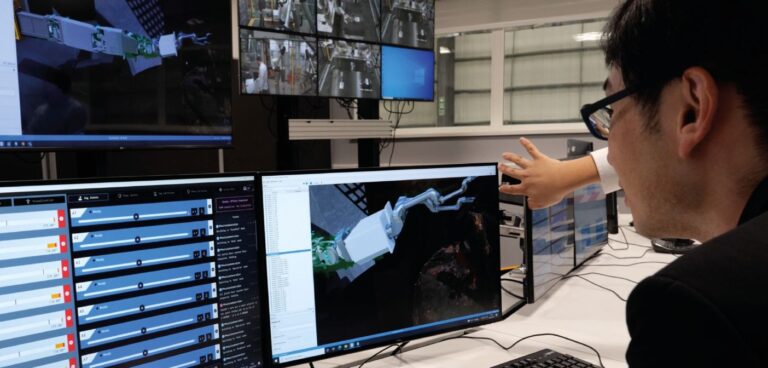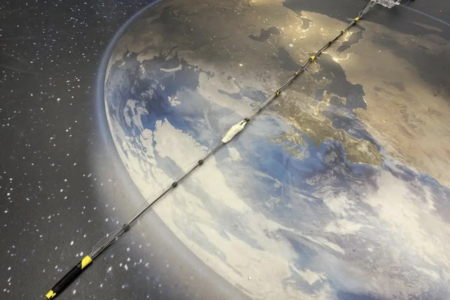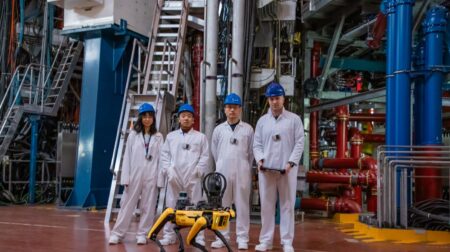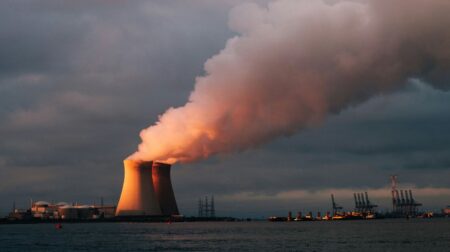The UK Atomic Energy Authority’s Remote Applications in Challenging Environments (RACE) team has welcomed visitors from Tokyo Electric Power Company (TEPCO), the Nuclear Decommissioning Authority (NDA), Sellafield and Magnox for the first time in-person since the launch of the LongOps programme.
LongOps focuses on Long Term Remote Operations and Long Reach Robotics that will be required across the NDA estate, JET and Fukushima Daiichi.
A series of demonstrations took place to highlight a common digital framework designed by RACE to support fusion and fission decommissioning.
The visitors saw interactive simulations of nuclear reactors at Fukushima Daiichi using the next generation digital mock-ups in Remote Handling Operating Virtual Reality (RHOVR) and got to trial new digital haptic models.
Keisuke Takenaka of TEPCO, said: “The user interface for the demonstration today was very good. We are very impressed with the technology being developed in addition to the RACE facilities. We look forward to discovering all that our secondees learn during their time here.”
Three new secondees were also welcomed to site for the first time, taking the total number of LongOps TEPCO secondees to nine. They will benefit from RACE’s long-term experience in remote handling, while also building up knowledge for Japanese decommissioning projects at Fukushima.
Rob Buckingham, director of RACE, added: “We are pleased to welcome TEPCO to RACE and for our Japanese colleagues to experience our UK technology in-person. We have a grand vision for RACE – one unified set of software tools that gives operators access to any hardware in the plant – and as our guests have experienced, we are very much on the journey to making that a reality.”
The LongOps initiative, a £12M four-year nuclear industry collaboration funded by UKRI, NDA and TEPCO, and led by RACE, is working to support faster and safer decommissioning at TEPCO’s Fukushima Daichi reactors in Japan and at Sellafield in the UK.
The main challenges in decommissioning TEPCO’s Fukushima Daiichi plant is fuel debris retrieval, which involves inspecting and removing melted and re-solidified nuclear waste from the inside of the three damaged reactors. Unmanned robots have been used to video this debris.
Additionally, developments from LongOps will also be used in the upgrading, maintenance and dismantling of fusion devices such as JET.
Read more: Major UK-Japan robotics deal for fusion energy and nuclear decommissioning research








